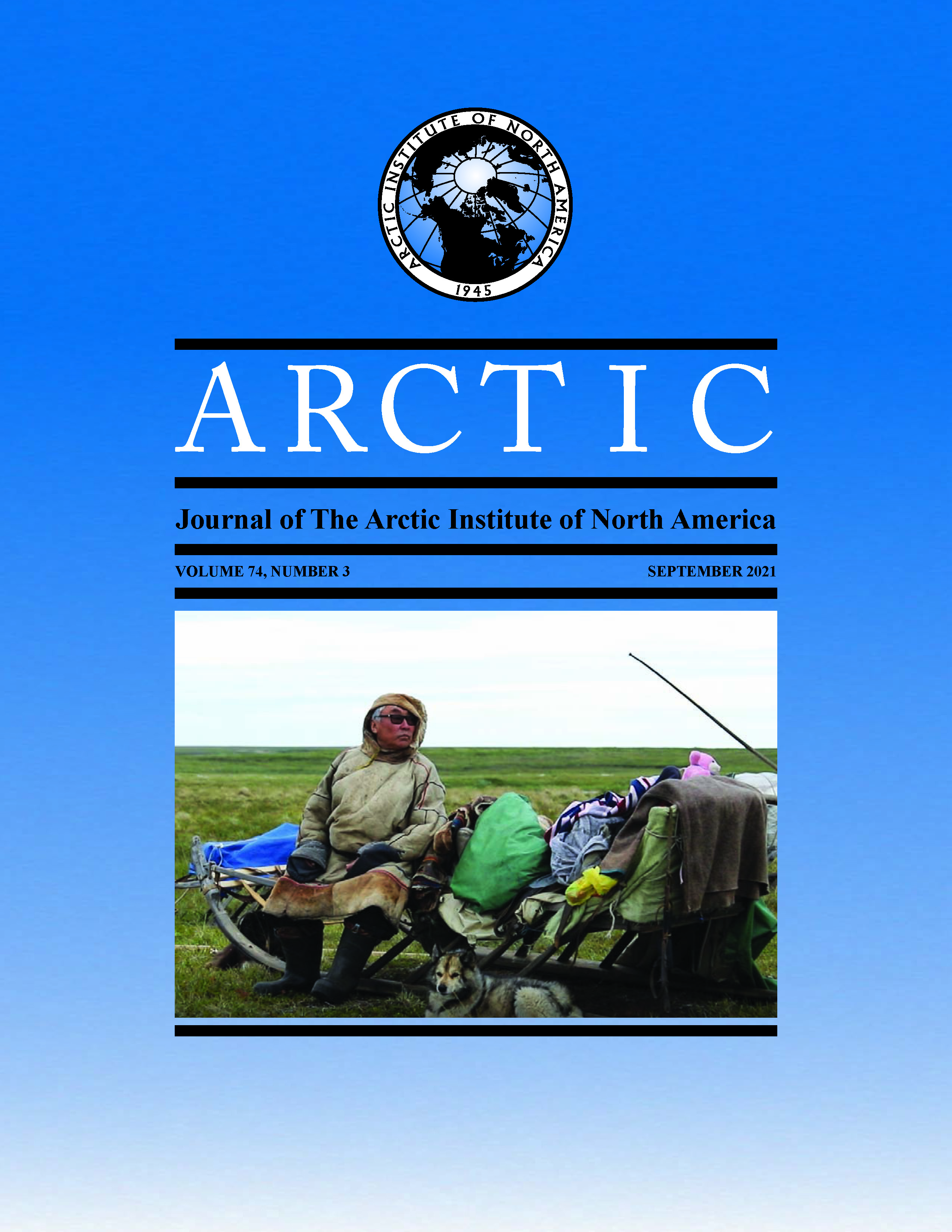Daily Field Observations of Retrogressive Thaw Slump Dynamics in the Canadian High Arctic
DOI:
https://doi.org/10.14430/arctic73377Abstract
With observed increases in retrogressive thaw slump (RTS) number, rates, and size in recent decades, there is a need to understand these highly dynamic landforms as they impact surrounding ecosystems and infrastructure. There is a general lack of detailed (e.g., daily) field observations of change in RTSs; we help fill this gap by monitoring three RTSs for much of the 2017 thaw period by setting up and tracking survey transects on a near daily basis. We correlated mean daily and cumulative retreat to mean daily air temperature (MDAT), total daily precipitation (TDP), and cumulative thawing degree days (TDD) using various polynomial regressions and Pearson correlation techniques. Our results show that July retreat was highly variable, and periods of increased RTS retreat did not always align with periods of increased air temperature. Also, multiple periods of increased retreat largely driven by sediment distribution in the RTS floor could occur within a single period of increased air temperature. Retreat rates decreased suddenly in early August, indicating a threshold of either air temperature, solar radiation or a combination of both must be reached for increased retreat rates. A statistically significant correlation was found between daily mean and mean cumulative retreat with MDAT (p > 0.001) and TDD (p > 0.001 and > 0.0001) but not with total daily precipitation. Correlating mean cumulative retreat and TDD using polynomial regression generated R2 values greater than 0.99 for all three sites. Both cumulative retreat and TDD account for past and current conditions, as well as lag responses, within the monitoring period. The high R2 values for the correlation of mean cumulative retreat and TDD suggest the potential for accurately modelling RTS retreat with minimal field data (air temperature and headwall position), however modelling is currently restricted to individual RTSs and only within short time scales. Monitoring RTSs on a daily scale allows RTS behaviour and trends to be identified that may be obscured at annual time scales and highlights the importance of all system inputs when considering RTS retreat dynamics.
Downloads
Downloads
Published
Issue
Section
License
Copyright (c) 2021 ARCTIC

This work is licensed under a Creative Commons Attribution 4.0 International License.


